15 Essential Tips for D and D 5e World-Building
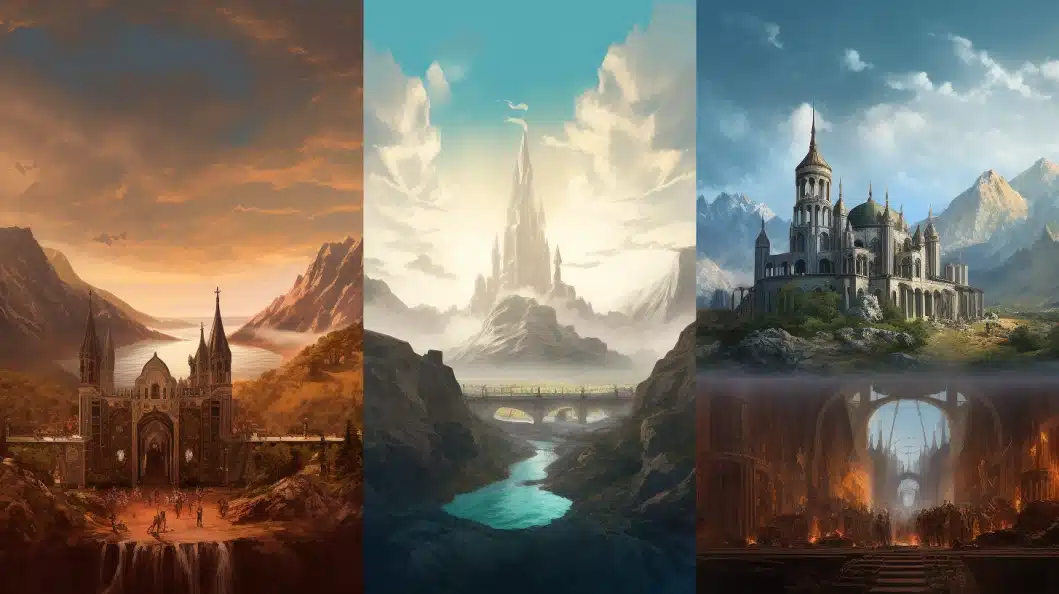
Hey there, adventurers! We’re seasoned dungeon masters here, and we’ve learned a thing or two about crafting engaging D and D 5e worlds. In this guide, we’ll share 15 essential tips that’ll make your world-building a breeze.
Let’s dive into the basics, stir our imaginations, and plan strategically. Together, we’ll give our players a taste of freedom and adventure they’ll never forget.
Ready to create an unforgettable realm of our own? Let’s roll the dice!
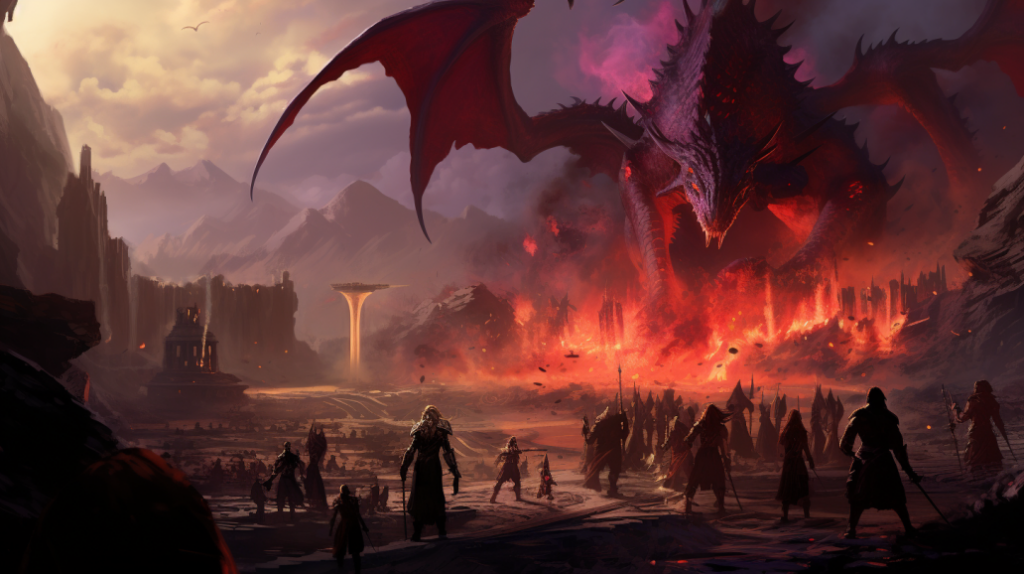
Unveiling Insights: Crafting Compelling Worlds
- World-building involves more than just geography and history, but also culture, politics, and religion.
- Draw inspiration from real-world geography, history, and cultures to enhance realism.
- Carefully select geographical features to accurately craft the landscape and tell stories of the world’s history.
- Climate and terrain are dynamic elements that challenge, thrill, and inspire.
Understanding D and D 5e World-Building Basics
In our first essential tip for D&D 5e world-building, we’ll guide you through the basics you need to grasp. The use of differentiated world-building techniques is crucial.
Think of world-building as an art form, where each brushstroke adds depth and complexity to our creation. The canvas? Our imagination. The paints? A vibrant mix of D&D 5e tools usage.
Creating a world in D&D 5e isn’t merely about sketching geographical outlines or crafting historical narratives. It’s also about culture, politics, religion, and the subtle nuances that breathe life into our world.
Imagine the hustle and bustle of a city market, the eerie silence of an ancient forest, the intense politics of a royal court, or the mystical aura of a secluded temple.
When using D&D 5e tools, let’s not be afraid to experiment. Let’s mix and match different elements, create complex political systems or intricate magic rituals, design unique races or species, and above all, let our creativity run wild.
Remember, the goal isn’t just to create a world, but to create a world that lives, breathes, and evolves.
Now, let’s transition into the next section about empowering imagination with realism.
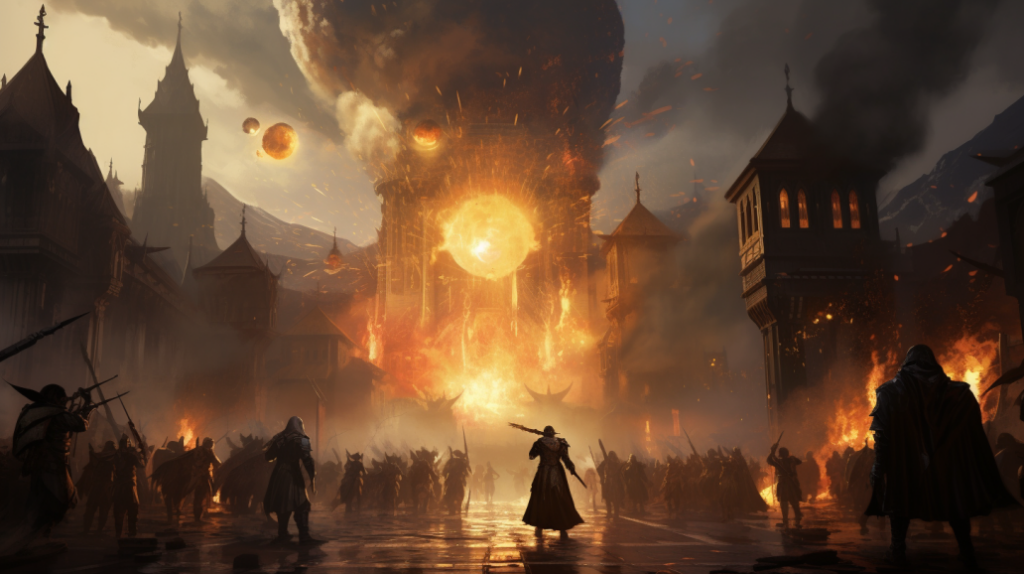
Empowering Imagination With Realism
The key to empowering your imagination in D&D 5e world-building is grounding it in a dose of realism.
Merging realities from our world with the fantastical elements of the D&D universe augments suspense and brings your stories to life.
But how can we achieve this?
- Draw inspiration from our world’s geography, history, and cultures. The diverse landscapes and societies of Earth can provide a rich tapestry for your D&D world.
- Implement real-world laws of physics and biology to a certain extent. Even a fantasy world needs some consistency to be believable.
- Use real-life consequences and moral dilemmas to challenge your players. This not only enhances realism but also deepens the emotional connection of your players with the game.
Remember, the goal isn’t to restrict your creative freedom, but rather to enhance it. By grounding your world in some reality, you provide a familiar base from which your imagination can soar.
Realism in D&D doesn’t mean you’re tied down to the mundane – it’s an anchor, a jumping-off point that lets you create a world that’s both incredible and credible.
Crafting the Landscape of Our World
Now, let’s turn our focus to how we shape the physical contours of our world.
Together, we’ll consider the strategic selection of geographical features, the impact of diverse climates and terrains, and how inhabitants can influence and interact with their surroundings.
Geographical Features Selection
Often, we find ourselves carefully selecting the geographical features to accurately craft the landscape of our D and D 5e world.
The intertwining of Geographical History Development and Natural Disaster Impact is essential in making the world feel alive and dynamic.
Mountains and Valleys: Birthed from the tectonic clashes or carved by relentless water, they serve as natural barriers and resources.
Climate and Terrain: Shaping the Landscape of Your D&D 5e World
In the realm of Dungeons & Dragons, the world is not merely a stage upon which your players’ adventures unfold; it is a living, breathing entity, shaped by the interplay of climate and terrain.
Climate change, with its sweeping effects, sculpts the landscape, creating environments that test the mettle of even the most seasoned adventurers.
Imagine a world experiencing a rapid warming trend, where melting ice caps unleash devastating floods and rising sea levels reshape coastlines.
Or perhaps your world is gripped by an ice age, transforming once-verdant lands into icy wastelands, forcing inhabitants to adapt to a harsh, frozen existence.
Climate extremes aren’t the only forces at play. Unpredictable weather patterns can add an element of danger and excitement to any adventure.
Hurricane-like storms that materialise without warning, or heat waves that ignite forests into infernos, can turn peaceful journeys into perilous trials.
Climate and terrain aren’t mere backdrops; they are dynamic elements that can challenge, thrill, and inspire your players.
A sweltering desert can test their endurance, while a dense jungle can conceal hidden treasures and forgotten ruins.
Mountain ranges can provide breathtaking vistas and challenging climbs, while deep forests can harbour ancient secrets and dangerous creatures.
Embrace the power of climate and terrain to craft a world that not only looks stunning but also feels alive, breathing, and full of surprises.
Let the landscape become an active participant in your players’ adventures, shaping their experiences and testing their skills.
- Rivers and Oceans: Bodies of water, teeming with life and trade routes, often shaped by the merciless hand of natural disasters.
- Forests and Plains: Lush or barren, they provide diverse habitats and mysterious places for adventures.
These geographical features aren’t just for show; they hold stories of their own. They’re the silent narrators, speaking volumes about our world’s history and the forces that shaped it.
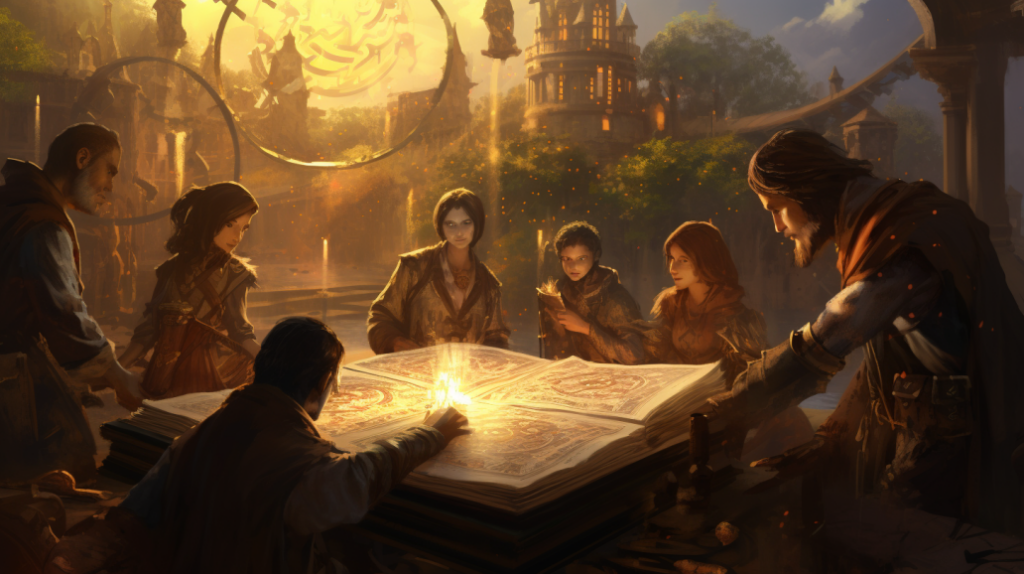
Inhabitants Impact
While I’m crafting the landscape of my world, it’s crucial to consider the profound impact the inhabitants can have on their surroundings.
Inhabitant diversity and species interaction are key factors that shape the environment.
Diverse Inhabitants: Different species coexist, each with unique adaptations and lifestyles. These variations can significantly alter the terrain, from dwarves digging tunnels in mountains to elves shaping trees into homes.
Species Interaction: The relationships between species further shape the world. Predators, prey, allies, and enemies all leave their mark on the landscape, influencing where and how creatures live.
Cultural Impact : The inhabitants’ cultures and societies also shape the environment. Consider how a city built by magic-users might differ from one built by craftsmen.
Establishing the Laws of Magic
In the realm of D and D 5e world-building, it’s essential to establish the laws of magic that will govern your universe. Magic limitations aren’t just boundaries; they’re opportunities for creativity.
Spellcasting consequences enrich the narrative, grounding magic in a system of cause and effect.
Let’s unpack this with a 3×4 table:
| Law | Limitation | Consequence |
Conservation of Magic | Spells drain energy | Exhaustion or weakness |
Rule of Equivalent Exchange | High-level spells require significant sacrifices | Loss of items, health, or even life |
Law of Contagion | Magic can be contagious | Unintended spread or mutation of spells |
Law of Belief | The effectiveness of magic depends on the belief of the caster and the audience | Failure or backlash if belief wavers |
These laws aren’t just rules. They’re the backbone of your magical world, shaping how your characters interact with magic and each other.
They define the risks, rewards, and the very reality of your world. So, dare to dream, to experiment, and to create a magical system that breathes life into your world.
The Importance of Diverse Cultures
Often, I’ve found that incorporating a rich diversity of cultures into your D and D 5e world significantly enhances its depth and realism.
It’s not just about having different races and creatures, it’s about understanding their traditions, customs, and ways of life.
This diversity brings distinctive flavor to each interaction, quest, and conflict, offering players an immersive, rich experience.
The cultural exchange impact is immense. Interaction between cultures can lead to alliances, conflicts, and even the blending of traditions, presenting opportunities for rich storytelling.
Additionally, tradition interpretation diversity means that different cultures in your world might’ve unique takes on common practices or beliefs, adding an extra layer of depth.
Here are some key points to consider when incorporating diverse cultures:
- Think about how each culture interacts with the world around them. What’re their traditions, values, and beliefs?
- Consider the impact of cultural exchange. How do different cultures influence each other?
- Remember the importance of tradition interpretation diversity. How does each culture interpret common practices or beliefs differently?
Incorporating diverse cultures into your world-building process isn’t just a nice-to-have, it’s a must-have. It breathes life into your world and gives it a richness that players won’t be able to resist.
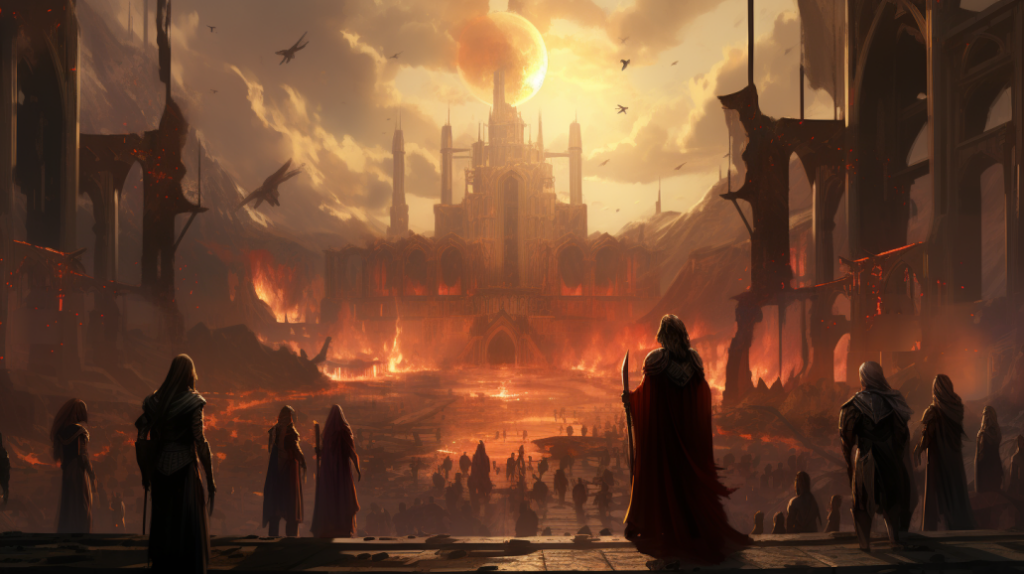
Crafting Memorable Characters and NPCs
We’ve discovered that creating memorable characters and NPCs is a key element of successful Dungeons and Dragons 5e world-building.
It’s about striking a balance between their abilities, their character motivations, and how they integrate into the world we’re creating.
We begin by focusing on character motivations. Whether it’s a thirst for revenge, a relentless pursuit of knowledge, or an insatiable quest for power, these motivations drive the character’s actions and shape their personalities.
We ensure these motivations are compelling, believable, and complex enough to captivate our players.
Next, we delve into the backstories of our NPCs. These backstories should be as intricate and engaging as those of the main characters.
They’re not merely obstacles or aids for our players; they’re individuals with their own hopes, dreams, and tragedies.
We enjoy weaving these backstories into the broader narrative, revealing them piece by piece, adding depth to the world and making the NPCs feel like real people.
Developing Engaging Storylines
As we craft our game world, we place a strong emphasis on creating compelling storylines that not only entertain but also challenge and inspire our players.
Each quest, plot twist, and climactic moment is meticulously designed to foster character development and maintain a captivating narrative pace.
To keep our players hooked, we employ several strategies:
We infuse unexpected plot twists into the storyline to keep the narrative fresh and exciting. We strive to deliver the unexpected in the most surprising ways.
We weave players’ character backstories into the main plot, making the story more personal and allowing for deeper character development.
We constantly challenge players’ moral and ethical beliefs, not only increasing the game’s difficulty but also prompting them to engage with it on a deeper level.
The Role of Religion and Mythology
In crafting my D and D 5e world, I’ve found that religion and mythology play a crucial role in shaping both the culture and conflicts within the game’s universe.
They provide the backdrop for epic encounters and divine interventions, shaping the perceptions and actions of both NPCs and player characters.
To create a unique, immersive experience, I start by inventing a pantheon of gods and goddesses with their own mythologies.
Each deity has a specific domain, a unique personality, and a set of followers. These deities might occasionally intervene in the mortal realm, providing divine interventions that could aid or hinder the players.
Next, I integrate mythological creatures into the game’s ecology. They’re not just monsters to be slain; they’re part of the world’s lore and history.
These creatures often have ties to the gods, serving as their agents or representing their will in the world.
Religion and mythology thus become tools for storytelling. They can shape political structures, inspire quests, and provoke conflicts. They offer players a sense of freedom, as they navigate a world where the line between the mortal and the divine is blurred, and where their actions can reverberate in the heavens.
Designing Unique Cities and Villages
Often, I find that the same principles I apply to creating religion and mythology can also be utilised when designing unique cities and villages in my D and D 5e world.
The key is to weave narratives that breathe life into the inanimate stones and architecture, making each city or village a character of its own.
To help you get started, consider these factors:
- Architectural aesthetics: Whether it’s a city built on ancient ruins or a village nestled within a magical forest, the architecture should reflect the history, culture, and environment of the place.
- City defences: Every city or village needs protection. The defence mechanism could be a colossal stone wall, a magical barrier, or even a sea monster lurking in the nearby waters.
- Society and culture: Who are the inhabitants? What’re their customs, traditions, and beliefs? How do they interact with outsiders?
Remember, it’s about creating a world that isn’t just believable, but one that’s compelling and immersive.
As I transition into the next section, we’ll explore how to incorporate conflict and politics into these settings, adding another layer of complexity to your world-building.
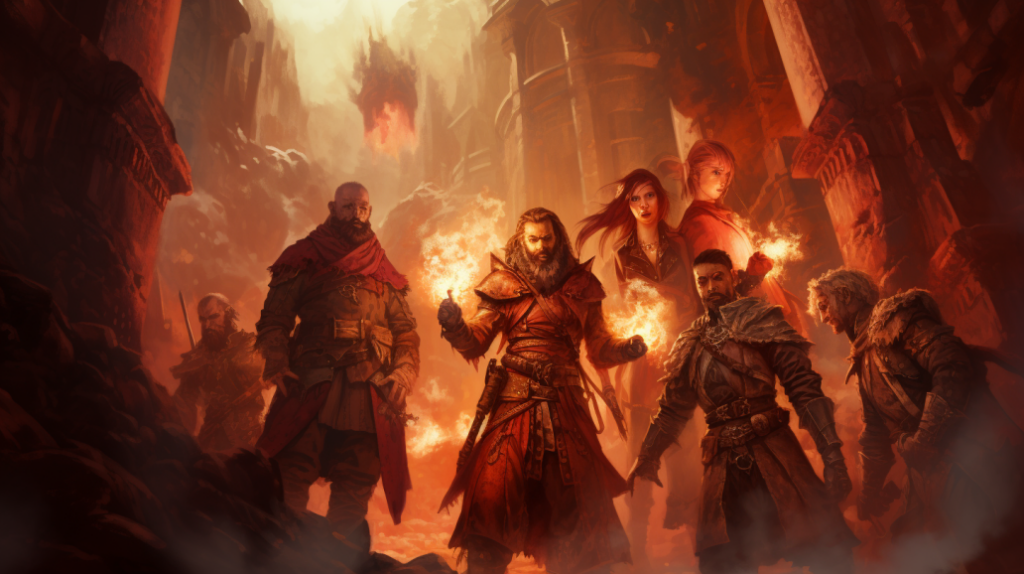
Incorporating Conflict and Politics
Diving deeper into world-building, let’s now navigate the complex waters of conflict and politics, crucial factors that can shape your city’s society and culture.
It’s important to weave conflict into your created world, as it drives the narrative and makes for compelling storytelling.
Whether it’s a bloody civil war that’s left scars on the city’s landscape and its people, or diplomatic negotiations that teeter on the edge of failure, conflict creates dynamic, evolving scenarios that can enrich your world.
Importance of Economy and Trade
Shifting our focus from politics, let’s now delve into the pulsating heart of any civilization – its economy and trade systems.
As the game master, understanding the economic system intricacies of your world is crucial. It’s not just about coins and barter but about the lifeblood of your realm.
Trade routes creation – It’s not enough to just have cities and towns. How do they connect? What goods flow between them? Picturing these paths can help you create dynamic encounters and interesting plot hooks.
Economic system intricacies – What’s the basis of wealth in your world? Is it gold, magic, or perhaps something more exotic? The answer shapes the behaviours and motivations of your NPCs.
Freedom to Trade – Remember, your players desire freedom. Easing restrictions on trade can offer them intriguing opportunities for profit and adventure.
Understanding and leveraging these economic elements will breathe life into your world, make it more immersive, and provide countless story opportunities.
Now, let’s transition into the next crucial aspect of world-building: balancing power structures and hierarchies.
Balancing Power Structures and Hierarchies
In the world of D and D 5e, power isn’t just about who’s the biggest sword or the most potent spell. It’s a complex dance of hierarchy and influence, a web of relationships that can be as fragile as they’re formidable.
Let’s tackle the art of balancing these power structures, ensuring a realistic hierarchy that doesn’t tip the scales too far in any one direction.
Forming Realistic Hierarchies
Let’s start creating realistic hierarchies in your D and D 5e world, ensuring a balanced power structure that fuels compelling narratives.
- Hierarchy symbolism: This is the essence of your world’s power structures. It’s the embodiment of your societal structures and their respective authority levels.
- Societal structures: These are the blueprints of your world’s communities, dictating how they function and interact with each other.
- Balancing power: This is the act of managing power dynamics to avoid a monolithic power structure, allowing for a more dynamic and engaging narrative.
Power Dynamics Balance
Balancing power dynamics in your D and D world is a crucial next step, as it lays the foundation for a rich, immersive gaming experience.
The presence of power abuse implications can be a driving force behind unpredictable alliance formation, which, in turn, can drastically change the political landscape of your world.
Introducing Unique Creatures and Monsters
Without a shadow of a doubt, I can’t overstate the importance of introducing unique creatures and monsters in your D and D 5e world-building process. Understanding monster ecology and creature behaviour helps to create a world that’s alive and brimming with potential for thrilling encounters.
It’s not just about having a monster for the sake of a fight, it’s about how that creature interacts with the world around it, and how it influences the environment and the story.
Here are some key points to consider while crafting your monstrous inhabitants:
- Creature Behaviour: Monsters should have unique behavior patterns that make sense to their nature. Are they solitary or do they move in packs? Are they territorial or nomadic?
- Monster Ecology: Consider the monster’s role in the world’s ecosystem. What does it eat? Where does it sleep? What impact does it have on its surroundings?
- Unique Features: Each creature should have distinctive attributes that set it apart, be it special abilities, unusual habits, or a unique appearance.
Planning for Player Progression
Moving on from crafting fearsome creatures, it’s crucial to remember that player progression is another key aspect that needs careful planning in your D and D 5e world-building process.
Character development and skill advancement aren’t just buzzwords but the very lifeblood of an engaging game.
Creating a world where players can grow their characters is like planting a seed – it’s your job to provide fertile soil and the right conditions for growth. The players will do the rest.
That means building a world rich in opportunities for skill advancement, where every quest, every challenge, every interaction moves a character closer to their destiny.
How do you do this? You can start with a roadmap. Outline the different stages of progression, from the early struggles of a fledgling adventurer to the epic battles of a seasoned warrior. This doesn’t mean restricting freedom – quite the opposite.
It’s about giving your players a world where their decisions matter, where their actions shape their character’s journey.
With the progression plan in place, your world now has depth and direction. It’s time to polish it up, to revise and refine your world until it gleams with possibility.
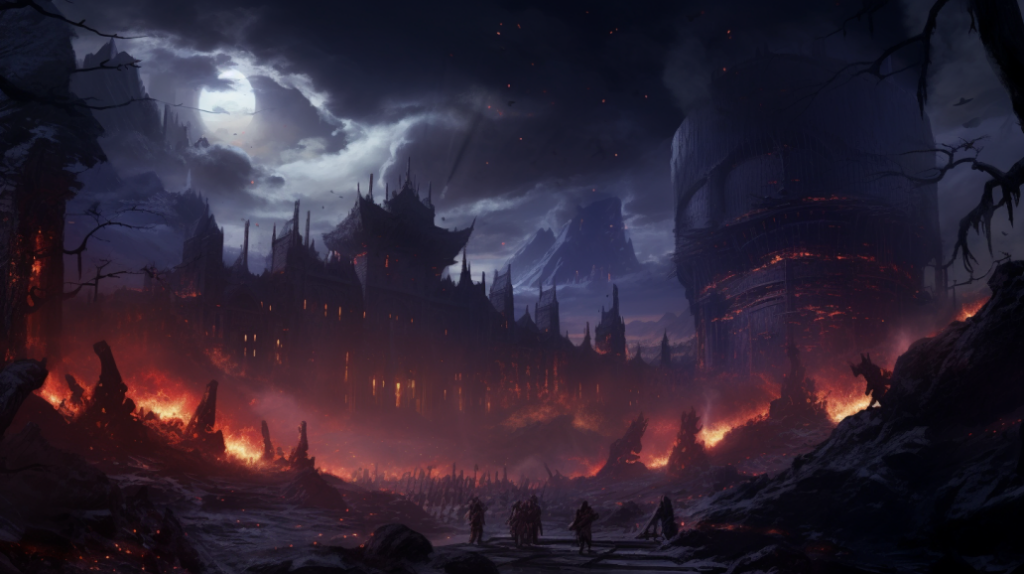
Revising and Refining Your World
Now, let’s shift our focus to the essential process of refining and reshaping your world.
This isn’t just about erasing mistakes, but about embracing the dynamic nature of your world, incorporating feedback, adjusting lore for consistency, and allowing your creation to evolve over time.
Feedback Incorporation
As I build my world, I’ve found that incorporating feedback from players and refining my ideas accordingly is an invaluable step in the world-building process. Feedback interpretations and feedback implementation are key to creating an engaging and immersive world.
Here are a few strategies that I use:
- I actively seek feedback from my players and consider their perspectives in my revisions. This step is crucial in ensuring that the world is as engaging for them as it’s for me.
- I’m open to revisiting my original ideas. Flexibility allows for the incorporation of fresh perspectives, enriching the world I’m building.
- I use feedback to identify and rectify inconsistencies, thereby enhancing the overall coherence and authenticity of the world.
Consistent Lore Adjustment
Why should you consistently adjust your world’s lore?
Well, it’s all about keeping your world alive, vibrant, and engaging. Lore integration techniques are your best tools in this quest.
They allow you to weave in new events, characters, or circumstances, enriching your world without causing narrative inconsistencies.
Remember, your world isn’t static. It’s a living entity that evolves with each campaign. New lore shouldn’t contradict the old, but build upon it, creating a layered, deep history that players can delve into.
Narrative consistency methods help ensure this. They guide you in making adjustments that align with the established lore, maintaining coherence while allowing for growth.
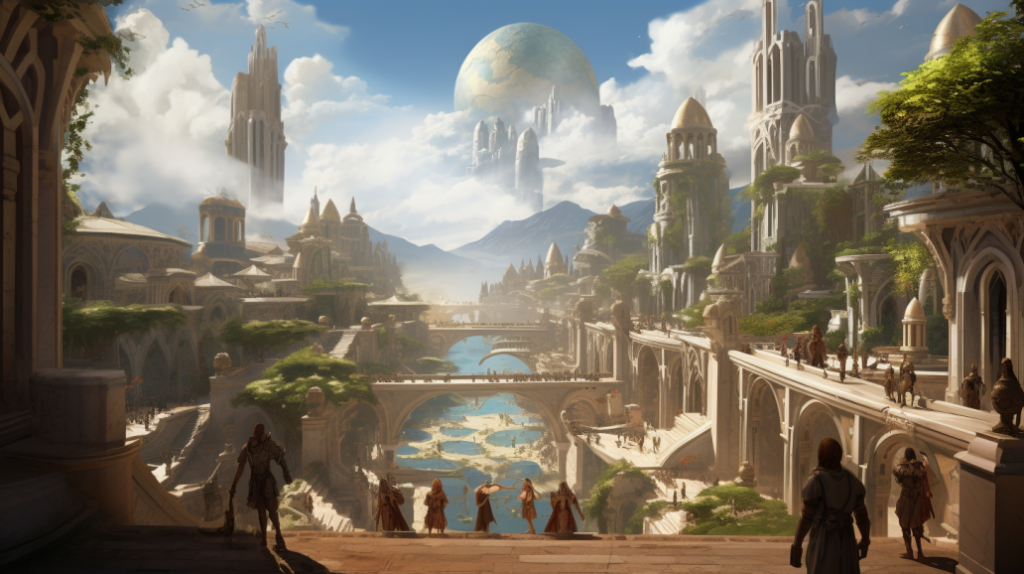
World Evolution Over Time
I’m here to tell you that the evolution of your D&D world over time is a crucial aspect of world-building; it’s not just a one-off task, but a continuing process of revision and refinement.
It’s about charting the course of your world’s history through timeline construction, marking significant historical events that shape the world’s present and future.
- Timeline Construction: Start with broad strokes, sketching out the major epochs, then zoom in on the finer details.
- Historical Events: Wars, disasters, discoveries – these events can change the course of history.
- Constant Refinement: Remember, your world is a living, breathing entity. It changes, adapts and evolves.
Frequently Asked Questions
What Are Some Recommended Resources or Tools to Help Manage and Organise My World-Building Process?
I’d recommend world building software like World Anvil or Campfire Pro. They’re great for organising your ideas. Also, try map creation techniques, both digital and hand-drawn, to visually structure your world.
How Can I Effectively Communicate My World’s Details to My Players Without Overwhelming Them?
I’d suggest incorporating lore subtly through NPCs, locations, and in-game events. Encourage player exploration to discover world details. It’s all about balance; reveal enough to intrigue, but don’t overwhelm with information.
What Strategies Can I Use to Ensure That My World Continues to Evolve and Feel Dynamic as the Campaign Progresses?
To ensure my world evolves dynamically, I’m exploring magic systems, altering them as the story unfolds. I’m also incorporating politics, shifting power balances to keep things fresh. It’s about creating a living, breathing world.
How Do I Handle the Introduction and Integration of Player-Made Characters Into My Custom World?
Incorporating player-made characters into my world, I weave their character backstories into the narrative. I consider their motivations, giving them roles that tie directly to the world’s events, making it feel personal and dynamic.
What Are Some Tips for Balancing Player Creativity and Autonomy With the Need for a Structured Storyline and World?
Balancing player freedom with a structured storyline takes finesse. I craft environments that invite exploration while using NPC development to guide the narrative. It’s a dance between maintaining control and encouraging creativity.
